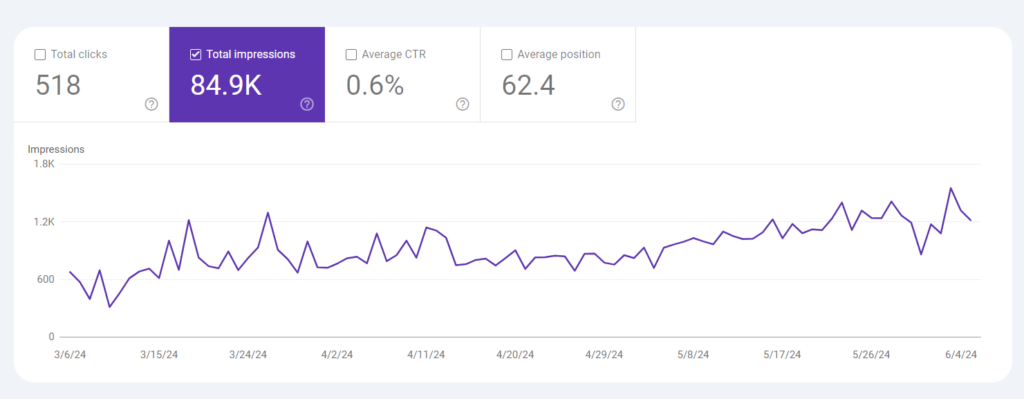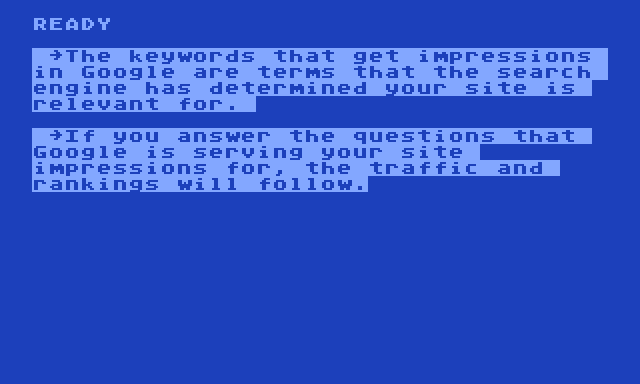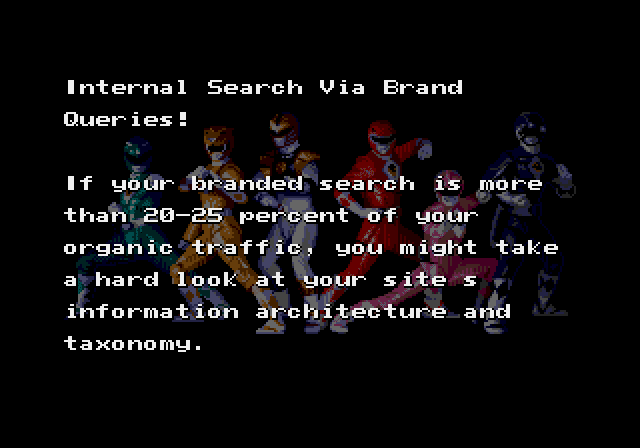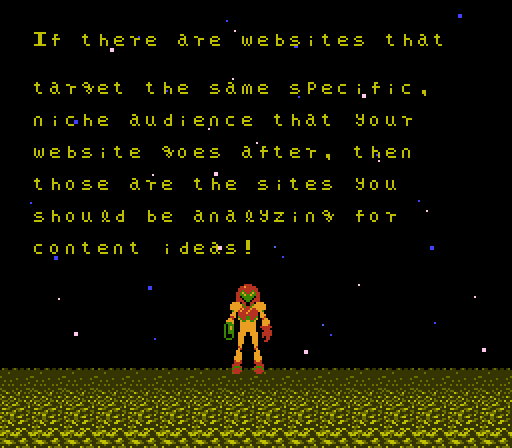You want leads, but not just any leads. Specific leads. Specific people who are interested in you and your project. The general “what is it?” head terms aren’t going to meet those customers where they are, and sorting keyword lists by volume isn’t going to cut it.
Typical SEO tricks of the trade don’t work for these specific, niche audiences. So here are nine ways to get to those deeper, more nuanced content ideas.
1. Sort your Google Search Console report by Impressions
This is a go-to in the SEO world, but it’s not obvious to publishers who aren’t knee-deep in content optimization. The keywords that get impressions in Google are terms that the search engine has determined your site is relevant for.

This is literally the “if you build it, they will come” scenario in keyword research. If you answer the questions that Google is serving your site impressions for, the traffic and rankings will follow. Look first for pages that get high impressions but rank on page 2 for a term. Do you just need to add a paragraph or a section to the existing content? Then, for the terms with high impressions and no clicks, check for content gaps on your site. Want to track your website’s performance fast, at a glance? You should check out SEOGets Google Search Console tool. The tool is amazing!

(Note: If your site isn’t “about” that high-impression, low-click search term in Search Console, then it’s time to take a hard look at your existing content and internal linking because there’s a mismatch between what you’re telling Google and what you really are about.)
2. Internal Site Search Data

If you have a search bar on your website (and you should, it’s a usability best practice), you have a gold mine full of the things that your existing users are looking for on your site. This sometimes takes a few special hoops to set up in the analytics platform, but it should be relatively easy to get to a list of the most-searched terms on your website from the back-end data.
Search terms can inform recommended updates to the top-level nav (are users having a hard time finding a key page?) and they can inform the content that users are expecting your site to have, but that they can’t locate.
This is a great source for content gap ideas that are highly relevant to your existing audience.
3. Analyze Branded Search Terms
If your site doesn’t have a search bar, another way to get this information from your existing users is to take a look at the branded searches in Google Search Console. People will use Google as an internal site search rather than clicking around a hard-to-navigate site experience.
If your branded search is more than 20-25% of your organic traffic, you might take a hard look at your site’s information architecture and taxonomy.

Further, those branded search terms will point to content gaps. Look for the no-click results where they were specifically looking for your brand name. That means you didn’t have what they were looking for! Bam, content gold.
4. Do geographically specific keyword research
Not all keyword tools offer this, but Google’s Keyword planner does have data about the Neilson DCMA and zipcodes that people live in paired with search volume. If yours is a website that is tied to specific locations, this tactic is for you.
Your search numbers will be smaller, but your targeted terms will be localized and specific to the region you want to rank for.
This is a relevant way to search for any business with at least one Brick and Mortar location. For locations across multiple regions, you may have to repeat it for each place.
The other time this is super helpful is when you run a website that includes an element of maps or way-finding. Travel plans, trail reviews, city guides, all of these things matter on the hyper-local level.
5. Look for “near me” search patterns
For those location-based businesses, another place to look is search terms that include the words “near me”. Generally, this is the function of people using mobile devices and counting on Google to know where they are physically located. They want a map pack result (so get on that Local SEO), and they want it fast.
You’d be surprised at how many websites aren’t optimizing for the “near me” search trend. If you have locations, those locations should have their own unique pages. And on those pages, the terms “near me” or “near you” are a really good idea.
6. Dig into competitor data
In SEO, it’s totally fair to cheat off someone else’s homework. If there are websites that target the same specific, niche audience that your website goes after, then those are the sites you should be analyzed for content ideas. Even if you’re partners or not direct competitors, it’s important to learn the search patterns that drive to those other sites.

This can not only give you content gap reporting, but it can also provide insights into how your niche audience is searching to get to those other sites. Do they use a specific browser or device? Do they use patterns of search terms – like “How to” or “etiology of” – or do they search primarily long specific phrases?
While you’re at it, take a peep, too, at how those competitors, organizations, and partners are organizing their content.

7. EXPAND OUT internal taxonomies
You are a website that is offering expertise in a specific topic area or niche. You know all of the categories and pieces of that niche interest, whether you’ve decided it’s worth writing about or not.
The thing is this: Google Categorizes websites according to what topics they fit into in their larger Knowledge Graph. And the algorithm has already determined the relative authority, expertise, and accuracy of your website’s content. The index is served up by topic, and if your website has an article on that topic where it belongs, it will usually rank around the same spot on the page.
Now, the work here is to create content for all of the topics and pieces that are relevant to your niche. So that should someone search on it you already have an authoritative answer ready to go.
Find the taxonomy of all of the topics relevant to your niche topic. Find the A-Z list of whatever, the database of whatsits. And answer every single last one of those pieces of content. Glossaries do really well with this kind of information (and can be produced at scale). This can also help you define your internal linking strategy!
8. “Also Talk about” SEO tools
This is a similar approach – but using competitor data rather than your own internal expertise. SEO tools will also give you the relevant related topics that appear on websites that are talking about target terms. This will give you an idea of the topics that are tangential to or adjacent to your own.
The key here, with your specific audience, is to really have a strong sense of your target personas and to meet the intent that those personas would use to search these topics. Not every “also talk about” is useful or relevant to everyone’s website, but if you have a persona who might need that information, it’s worth exploring.
Use Paid Advertising Campaigns To Gauge Audience Interest
Many websites that target niche audiences are content-rich and cash-poor, so the idea of targeting traffic with pay-per-click advertisements is off-putting. However, a tracking pixel on a broad match search term can be a really beautiful tool for content ideas.
With new laws and regulations regarding tracking and cookies, it might not be around forever, but right now it’s still possible to do this. Drop a pixel on any qualified user who comes in via targeted ads, and then follow them around, and see what their patterns are. This can reveal what your target users are really looking for and how they phrase those searches.
Google the Keyword before you write the content!
In all of the above examples, you’re looking at highly specific search terms with relatively low volume. It’s a good idea to review the search results pages for these terms before you plunge ahead with writing the content.

The results page can tell you a lot about the term – does it belong to a brand? Are there images or videos in the results? Is there a map pack? (is there one on a mobile search?) How do desktop results and mobile results differ? All of these questions can both help you shape the page that you create, and can help you see whether your offering would be relevant and useful in that crowd of existing search results.
